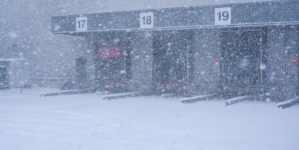-
Women Leading the Way in the UK Material Handling Industry - December 12, 2025
-
LiftEx 2025 live from Liverpool - December 11, 2025
-
DATA ANALYSIS – THE FOUNDATION OF EVERY PEAK SEASON - December 5, 2025
-
Creative education specialists Creative Hut give 3PL full marks for onboarding excellence - December 5, 2025
-
Unlimited Industries raises $12M to build the AI construction company that will power America’s future - December 4, 2025
-
Scottish Leather Group gets full-support solution from Rushlift - December 4, 2025
-
Etaily lands strategic investment from Japan’s SMBC – bringing total funding to $24M for Social Commerce enablement platform - December 4, 2025
-
Winners lift their LEEA Awards and raise the industry - December 4, 2025
-
Prism eLogistics and Brand Angels Partnership Gives Brands the Full Package - December 3, 2025
-
New data shows Tesla in danger of losing its way as European consideration to buy Chinese cars jumps 16% in 12 months - December 3, 2025
Preparing buildings for winter.
Chris Budd, Head of UK Sales at Watco, the UK’s leading manufacturer of industrial strength flooring products, gives tips and advice on jobs to be done now.
1 – Waterproofing
Winter weather in the UK usually means rain, rain and more rain! So it is really important that buildings are prepared and damp proofed as soon as possible, both inside and out. Damp can be an expensive and dangerous problem – it can affect plaster, rendering and cause timber decay, and excess moisture may well cause damage to office equipment, furniture and paperwork. In many industries where hygiene is imperative, it is particularly important that mould or mildew is not able to develop. Applying a flexible waterproof coating bridges gaps and cracks in walls and allows the substrate to breathe. A damp proof paint, or anti mould paint helps resist mould growth, and is particularly useful in basements or any area with a damp problem.
2 – Prevent Slips and Trips
Slips, trips and falls at work are a serious issue, HSE reported that they account for over a third of employee injuries, and make up more than half of all reported major/specified injuries. With wet weather, leaves, and icy conditions becoming a hazard outdoors anti-slip flooring is a necessity. Anti-slip coatings, indestructible GRP products and Anti Slip Tapes can help prevent these accidents. For hazardous areas heavy duty anti slip epoxy resin floor paint is designed to provide excellent slip resistance and minimise the risk of accidents. Matting is also a great way to prevent slips, and can be used as a temporary or permanent measure, especially for use on roofs.
Asphalt and tarmac is an increased risk in winter because ice tends to be invisible on the dark surface. One preventative measure is adding Anti Slip Traffic Paint . GRP(glass-reinforced plastic) is an excellent winter safety product, available in many different styles, i.e. sheets, treads, and step covers, and is great for external and internal applications. It can be installed at any temperature!
3 – General Roof Cleaning and Maintenance Guidelines
Damaged, tired, and worn out roofs can cause a lot of problems. Roof leaks can be incredibly costly in the long term if not repaired, causing a range of problems including mould, damp, and plaster damage. Regular checks should be made to keep track of the state of the roof and in particular:
Beware of debris. Tree limbs, built-up leaves, and twigs can cause serious problems for a roof. They can block drains, resulting in ponding water on the roof resulting in leaks and costly repairs. Keep nearby trees trimmed as shade can boost the growth of moss and algae, which bring their own set of concerns, such as erosion of asphalt roofing materials.
Test your drains and gutters at regular intervals. Any missed debris can be washed down drains causing a clog. Pour water down the drain and make sure it flushes out properly.
Watch out for blisters on your roof surface. These are signs that it might be time to replace a roof sealant.
When it is time for a new roof coating, do a thorough cleaning first. A Roof Cleaner is an excellent option to apply before power washing a roof. They can lift dirt and grease from the roof’s surface, thereby removing contaminants that can cause discolouring or reduce the adhesive properties of the coating. After power washing, simply rinse with clean water.
Check all seals and edges, and use an industrial caulk gun to touch up any places where the caulking might be coming loose.
For a long lasting solution a fibre reinforced rubber and bitumen roof coating will prolong the life of a roof by weathering the elements as well as bridging cracks. Fix a leaking roof using repair mortar, which can be trowellable, flexible and waterproof, ideal when working on flat roofs, slate roofs and even gutter repair.

































